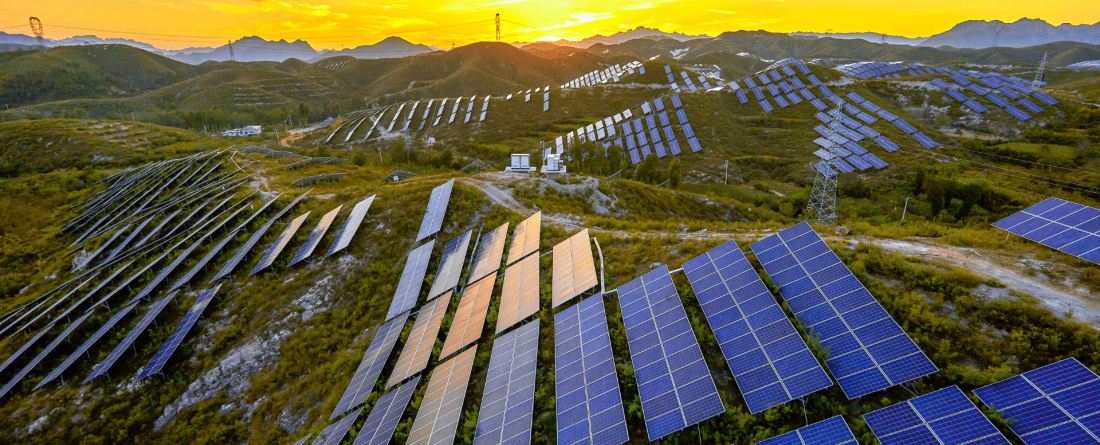
The Center for Global Sustainability's new report shows that with coordinated action from federal and non-federal entities (such as states, cities, and businesses), the United States could cut emissions by 65% from 2005 levels by 2035. Following ambitious pathways through 2035, the United States can meet its climate goals and remain aligned with the Paris Agreement’s global 1.5°C temperature rise target.
Check out our other research on pathways to achieving greater emissions reductions in the United States and in other major economies
- U.S.: U.S. Climate Pathways for 2035 with Strong Non-Federal Leadership
- U.S.: High-ambition climate action in all sectors can achieve 65% greenhouse gas emissions reduction in the United States by 2035
- Other Major Economies: Enhancing Global Ambition for 2035: Assessment of High-Ambition Country Pathways
Zhao, A., K. O’Keefe, S. Kennedy, M. Binsted, C. Dahl, C. Squire, K. Ordonez Olazabal, A. Bryant, J. Snarski, D. Churlyaev, S. J. Smith, J. Lou, K. Kennedy, G. Chalef, N. Hultman, and R. Cui (2024). “Toward 2035: Forging a High-Ambition U.S. Climate Pathway.” Center for Global Sustainability, University of Maryland. 68 pp
- In our analysis of plausible, all-of-society actions to deliver a high-ambition 2035 NDC, we find that the United States can achieve a 65% GHG emissions reduction by 2035, down from 2005 levels, under our core scenario.
- Achieving additional sectoral targets, including 100% clean electricity and 0.2% oil and gas methane intensity, requires additional efforts beyond the specific policies modeled in the core scenario, and can further drive overall emissions reductions to 67% by 2035.
- The average annual decarbonization rate from 2020 to 2035 increases by nearly 70% from 2.2% per year with current policies to 3.7% in the core scenario. Delivering this ambitious 2035 NDC, which also achieves the current U.S. 2030 NDC, will require specific actions from all of society – federal, state, city, businesses, and other actors – with guidance for implementation that is supported by robust analysis. This approach is critical to setting and achieving an ambitious U.S. national climate target in line with Paris Agreement goals, keeping a 1.5-degree pathway within reach.
- Methane has a critical role to play in reducing near-term warming. Using the EPA baseline which will govern the NDC process, methane emissions decrease by 35% from 2020 levels by 2035 through an extended methane fee that covers oil and gas, coal, and waste sectors, and incentives for reducing agricultural methane in the core scenario. With the use of an alternative baseline for oil and gas methane and the addition of an internationally agreed-upon standard to achieve a 0.2% methane emissions intensity for oil and gas production and transmission – a measure of how much methane is released into the atmosphere relative to the amount of oil and gas production – and a 50% reduction target for landfill methane, methane emissions can be reduced by 48% by 2035.
- In the electricity sector, a generation mix that is 91% powered by clean technologies is achieved under the core scenario, with unabated coal power phased out by 2030, solar generation increasing ninefold, and wind generation nearly sixfold between 2020 and 2035. By achieving the 100% clean electricity target, unabated gas power is phased down and replaced by additional solar and wind deployment.
- In the transport sector, 82% of light-duty vehicle sales and 42% of freight truck sales under our core scenario are electric by 2035. Passenger vehicle miles traveled fall by 65% compared to current policies as a result of switching from single-occupancy vehicles to alternative modes of transportation.
- In the buildings sector, 38% of water and space heating are electrified by 2035, and overall energy demand decreases by 16% compared to 2020 levels as a result of energy efficiency measures and increased electrification. In the industrial sector, progress is made in carbon capture and storage (CCS), with annual industrial carbon sequestration increasing to 154 MtCO2e by 2035.
- Land sink carbon sequestration increases by 96 MtCO2 from 2021 levels through enhanced carbon sequestration from forests and climate-smart livestock management.
- Critical to achieving emissions reductions is the full implementation and expansion of key federal policies, including over $1 trillion in investments under the Inflation Reduction Act and Bipartisan Infrastructure Law and the recently finalized EPA rules on vehicle emissions and fossil fuel power plants, underscoring the importance of supporting actions from non-federal actors.
- In addition to implementing federal policies, non-federal actors also play a key role in driving emissions reductions through expanding and delivering on their own policies. State and local leadership can unlock federal and industry decarbonization with initiatives in accelerating renewable energy targets, methane intensity standards, EV sales mandates, vehicle miles traveled reduction policies, building appliance electrification targets, and more.
- An initial analysis shows that even without federal support, continued, high-ambition actions from non-federal actors can achieve a 48–60% reduction by 2035. This highlights the impact that non-federal actors can still have despite uncertainties at the federal level.
Achieving net-zero emissions before 2050 requires that the United States takes a comprehensive, all-of-society commitment to climate action. We must set ambitious targets and engage in society-wide approaches to lowering greenhouse gas emissions, transitioning to clean energy sources, and the like, embedding those commitments in the U.S. 2035 NDC (Nationally Determined Contributions).
Using an all-of-society approach—mobilizing and integrating action by federal, state, city, industry, business, and other sectors—the United States can pursue a high-ambition policy pathway under its third round of NDCs. This approach will provide the ambition for 2035 and set the stage for 2050.
